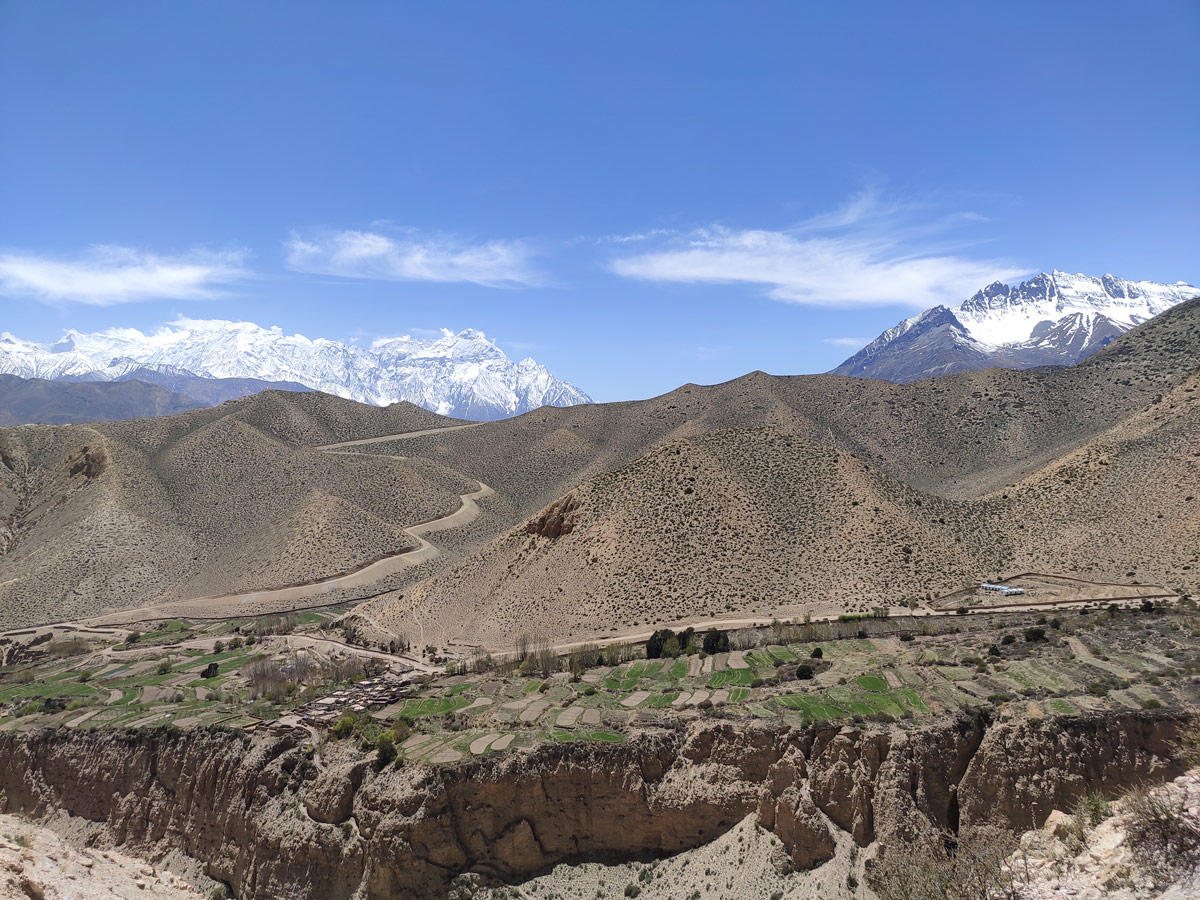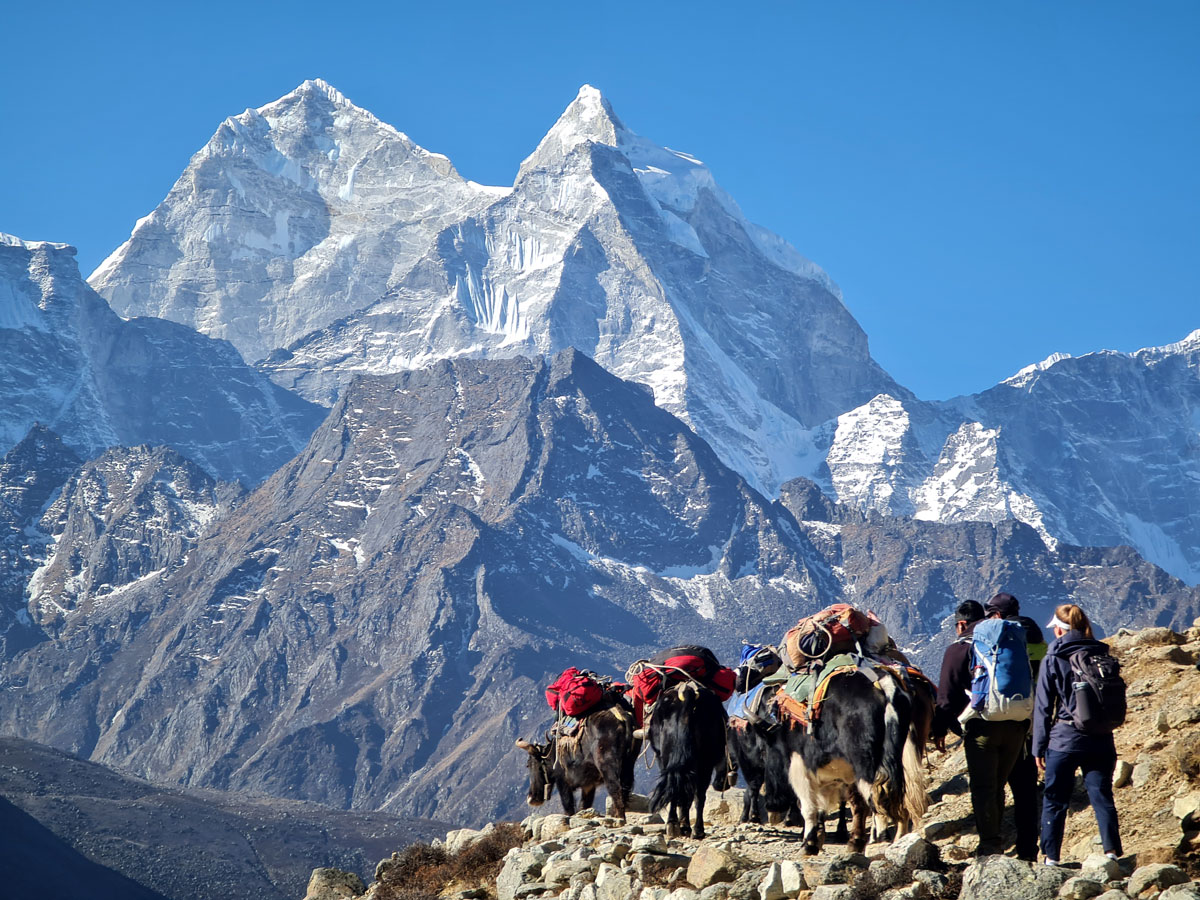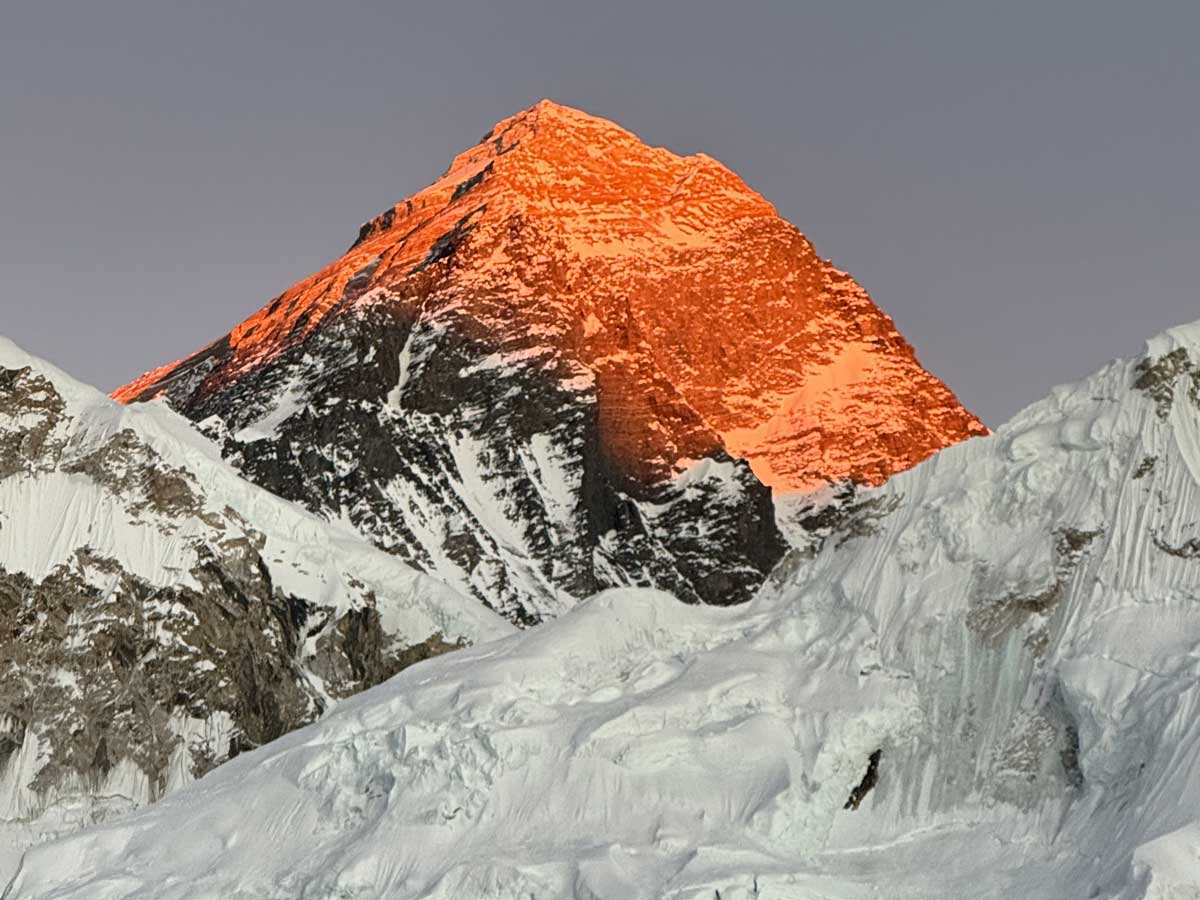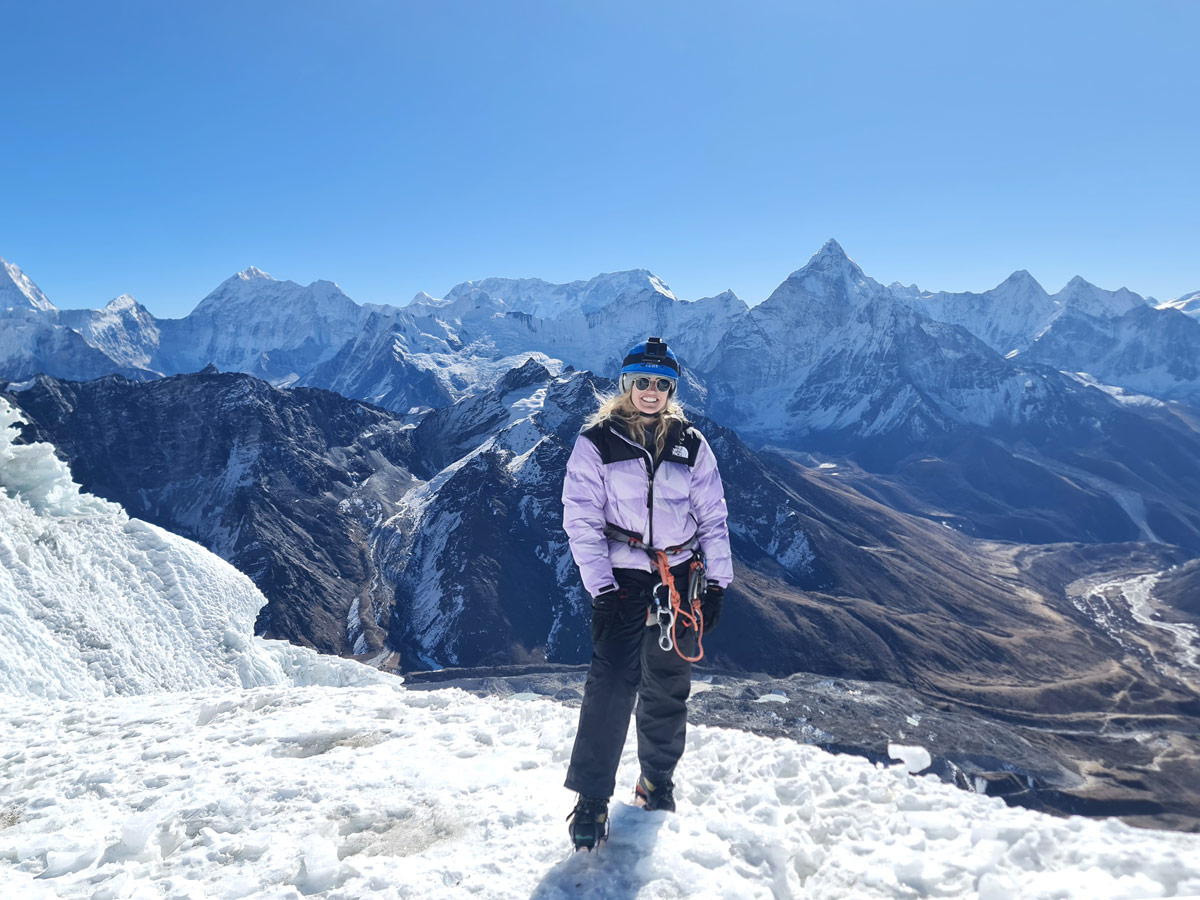If you are an avid trekker willing to explore new areas, you must have definitely heard of the Upper Mustang region of Nepal which is nestled in the trans Himalayan region of Nepal.
This place is a mystical region that is nestled in Nepal along the border of Tibet. Upper Mustang offers a unique glimpse into a world that remains untouched by modern influences.
For those seeking an adventure that transcends the ordinary, the Upper Mustang Trek offers an unforgettable journey through a landscape steeped in history and mystique. But what exactly will you explore during your time in Upper Mustang?
It’s the ancient villages scattered across this remote region that truly define its beauty. Trekking through them immerses you in a world that feels untouched by time, where culture, tradition, and Himalayan serenity remain remarkably preserved.
Regardless of whether you are a trekking enthusiast or a cultural enthusiast, this blog will serve as your comprehensive guide to reveal the essence of Upper Mustang as we learn about the villages of Upper Mustang.
Understanding the Region
The land of ancient kingdoms, Upper Mustang is located in the north central Nepal in a region that borders Tibet. A part of the vast Mustang district, the region lies in the rain shadow of Himalayan ranges including Annapurna and Dhaulagiri ranges.
That means, the region experiences none to minimal rainfall throughout the year as it lies beneath the mountains. Therefore, this makes it one of the best monsoon treks in Nepal.
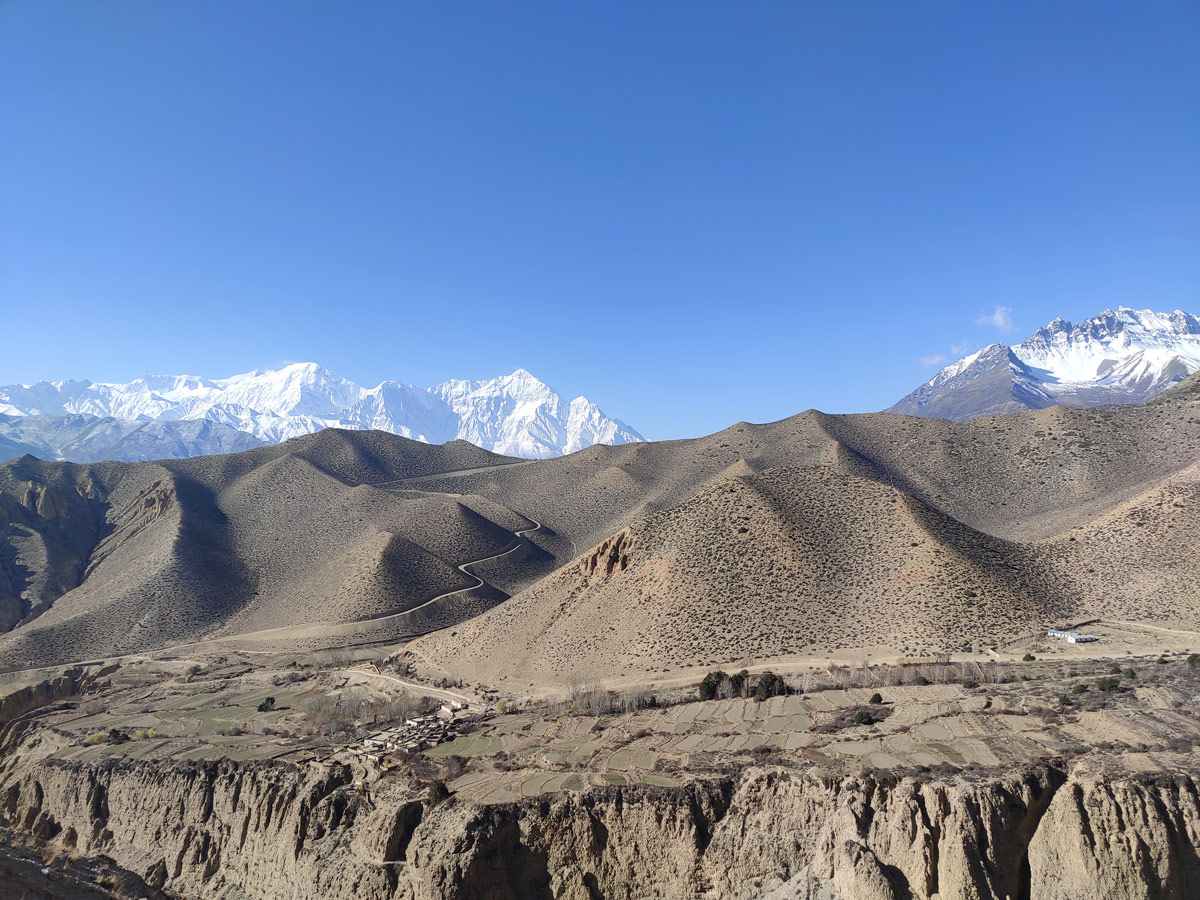
Contrasting other regions of Nepal with lush greenery, Upper Mustang features unique landscape of a high-altitude desert characterized by arid canyons, barren hills, towering cliffs, and wind-sculpted rock formations.
You will also find that the Kali Gandaki River, which is known to be one of the deepest gorges in the world, also cuts through this region and further shapes the rugged terrains of the region.
Beyond the unique and fascinating landscape, the Upper Mustang region is special also because of the rich history that lies behind it. Historically, Upper Mustang used to be an independent kingdom.
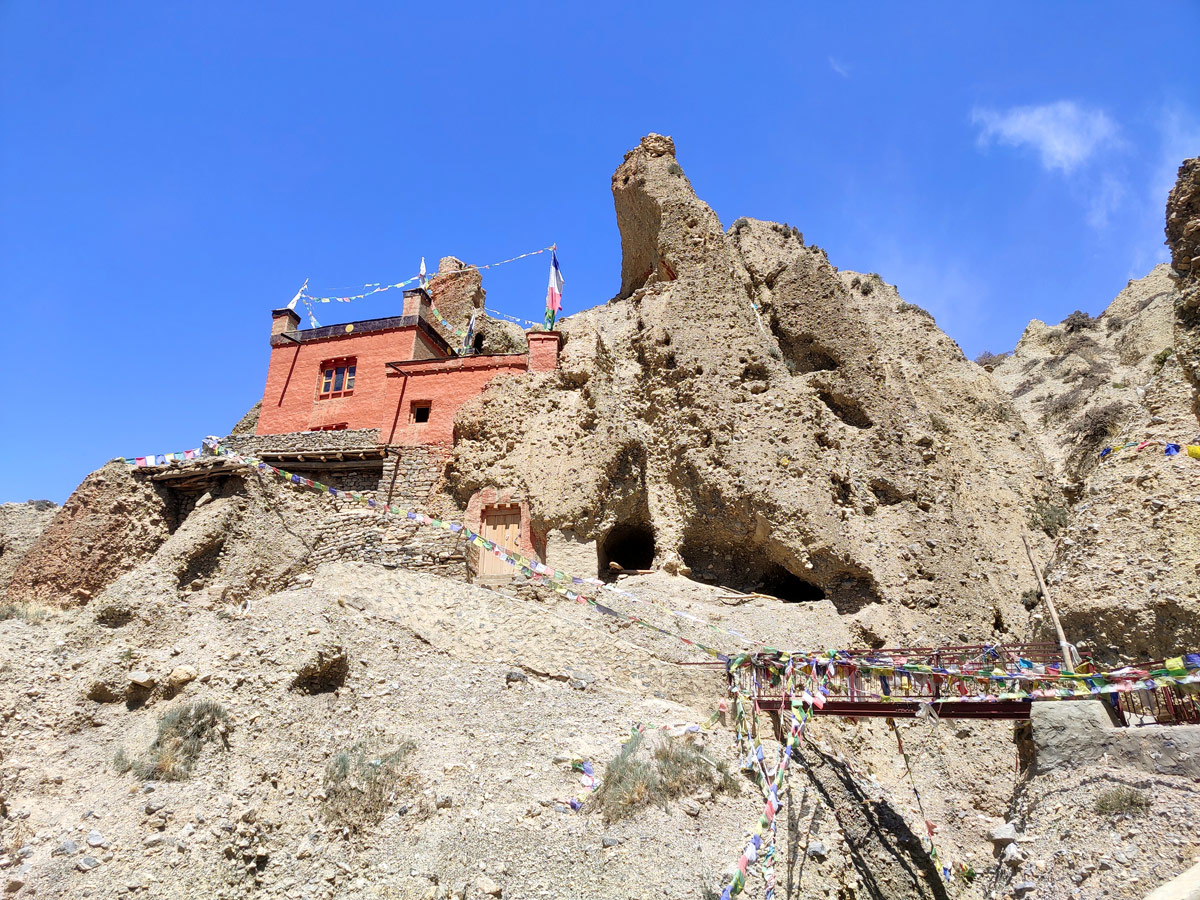
Ruled by the Lo dynasty, the region was deeply intertwined with Tibetan culture and politics. This is the reason why the people in Upper Mustang, earlier known as Loba, share strong cultural ties with Tibetans.
This is also why Tibetan Buddhism remains an integral part of the lives of the locals. Featuring many chortens, mani walls, and prayer flags, the region is also often referred to as the living museum of Tibetan Buddhism.
Key Villages of Upper Mustang
While some people think of the villages of Upper Mustang just mere resting spots for break while trekking, in reality they are much more than that. They are what makes Upper Mustang what it is.
These villages of Upper Mustang are gateways to understanding the region’s rich history and culture. And each village here has its own unique character, offering a glimpse into the daily lives of the local people.
Lo Manthang- The Walled Capital
Often regarded as the Walled City, Lo Manthang is the former capital of the Kingdom of Lo. This village holds the most historical and cultural importance in Upper Mustang.
The village is known as the walled city as there is a high mud brick wall surrounding the landscapes of the village, wherein lies a labyrinth of narrow alleyways and many traditional houses.
You will see that this mesmerizing medieval town exudes lots of radiance and grandeur even from a distance. The place is also known as the forbidden kingdom.
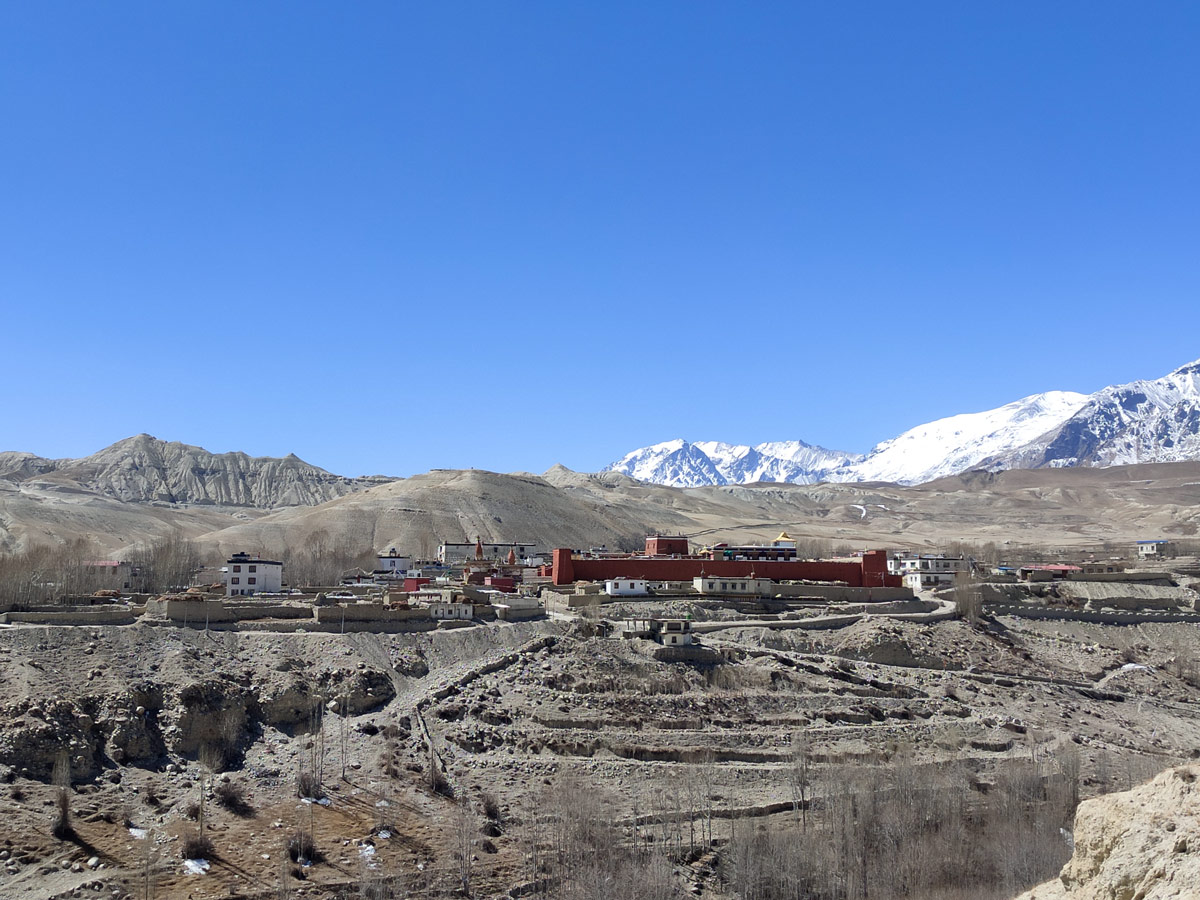
This name comes from the fact that entry to foreigners in Lo Manthang was restricted up until 1992. This restriction helped to preserve the ancient cultures and traditions here while being in isolation.
You will find that even now Lo Manthang is home to ancient monasteries, royal palaces, and a vibrant community that has till date preserved its traditional way of life. A classic symbol of this is the Lo Manthang Palace that showcases ancient Tibetan architecture.
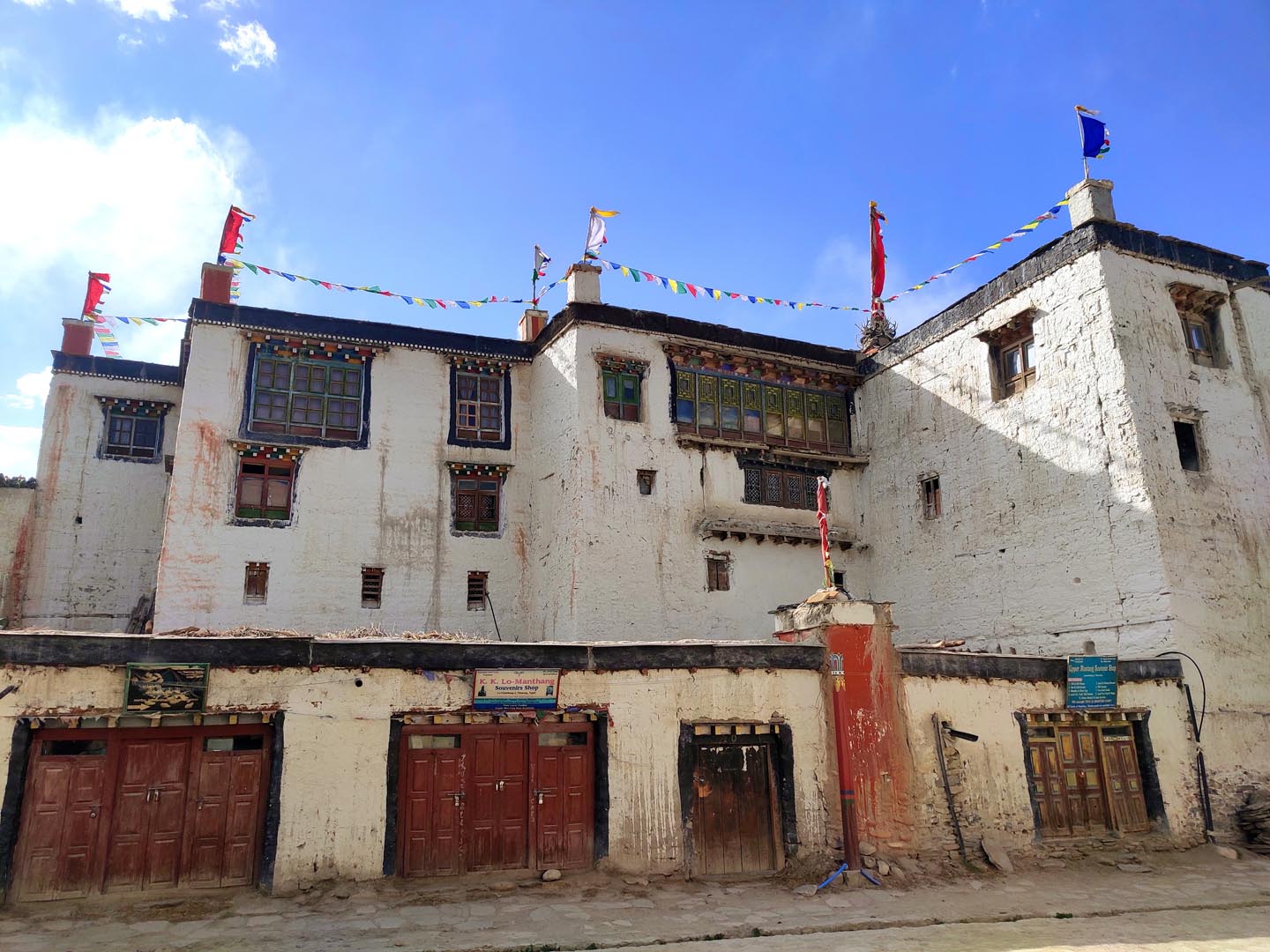
There are four major gompas located within Lo Manthang- Jampa Lhakhang, Thugchen Gompa, Chodey Gompa, and Choprang Gompa. And they are not just any other gompas, they hold immense history and cultural significance.
One of the major highlights of Lo Manthang is experiencing the annual Tiji festival celebrated over 3 days where people reenact the legend of Dorje Jono, a deity who vanquished a demon that brought havoc to Mustang. You will see lots of vibrant costumes, masked dances, and religious rituals during this festival.
Kagbeni- The Gateway to Upper Mustang
Located at the junction of Lower Mustang and Upper Mustang, Kagbeni is a village that holds immense spiritual importance, especially in Hinduism as well as Tibetan culture.
Kagbeni is the last village before entering Upper Mustang which makes it the gateway to the region. This settlement is absolutely scenic and is known for the picturesque views and ancient alleyways.
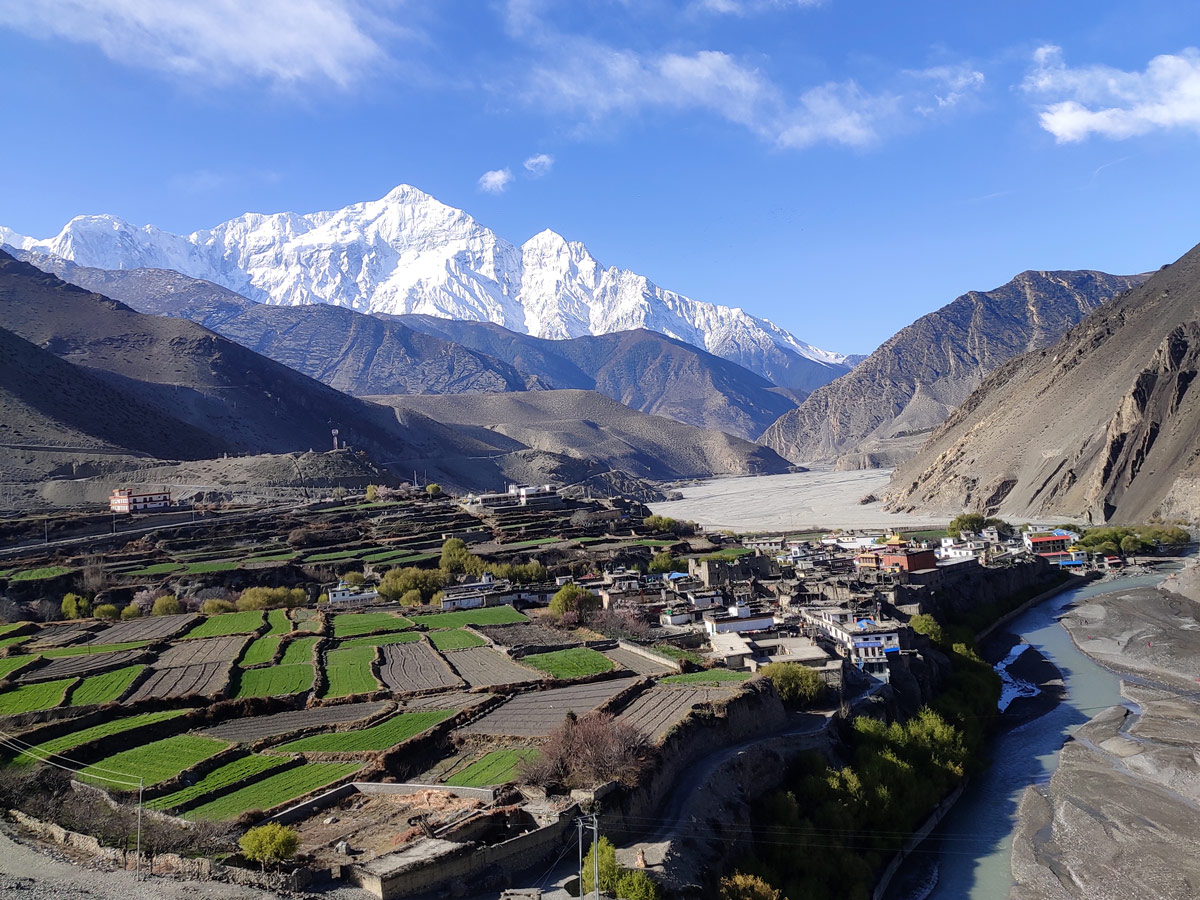
You will find a red walled monastery in Kagbeni- the Kag Chode Thupten Samphel Ling Monastery. This monastery was built in the 15th century and holds significant cultural importance in the region.
Another reason that makes Kagbeni culturally and religiously significant to the locals is that many sky burials take place at Kagbeni. For the unversed, sky burials are traditional funeral rituals that have been carried out in the Tibetan community for long.
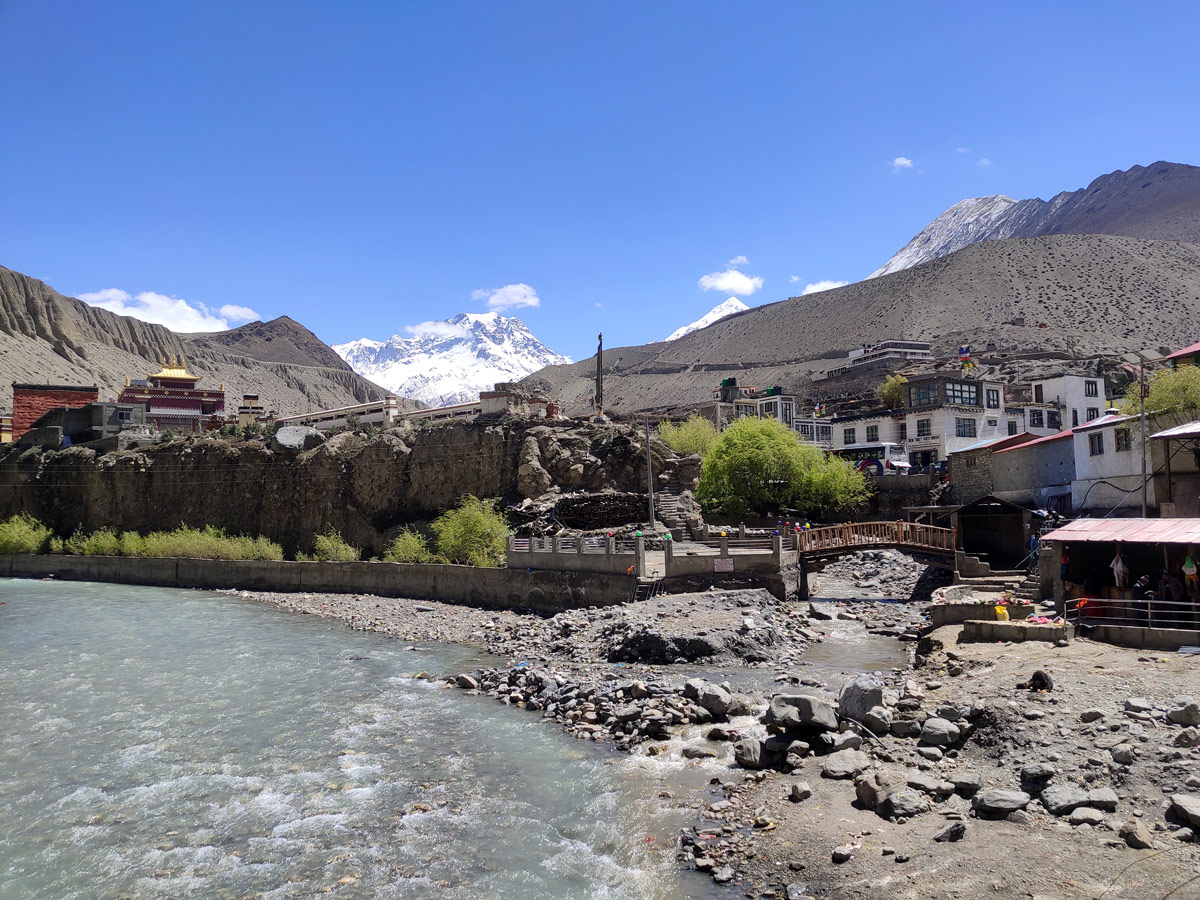
The Kali Gandaki River also passes through Kagbeni, and people consider this specific part of the river to be holy as you can find Shaligrams- fossilized ammonites here, which hold immense spiritual significance in Hinduism as they represent Lord Vishnu.
Chhoser – Caves and Cliff Dwellings
Often regarded as the hidden caves’ village, Chhoser has some of the most beautiful cave dwellings that date back thousands of years. Locals believe that these caves were once used as meditation sites.
They are often also regarded as the shelter of ancient times and even burial chambers. The Chhoser village is locally also known as Garphu village. You will see that the people here make a living out of yak herding and farming.
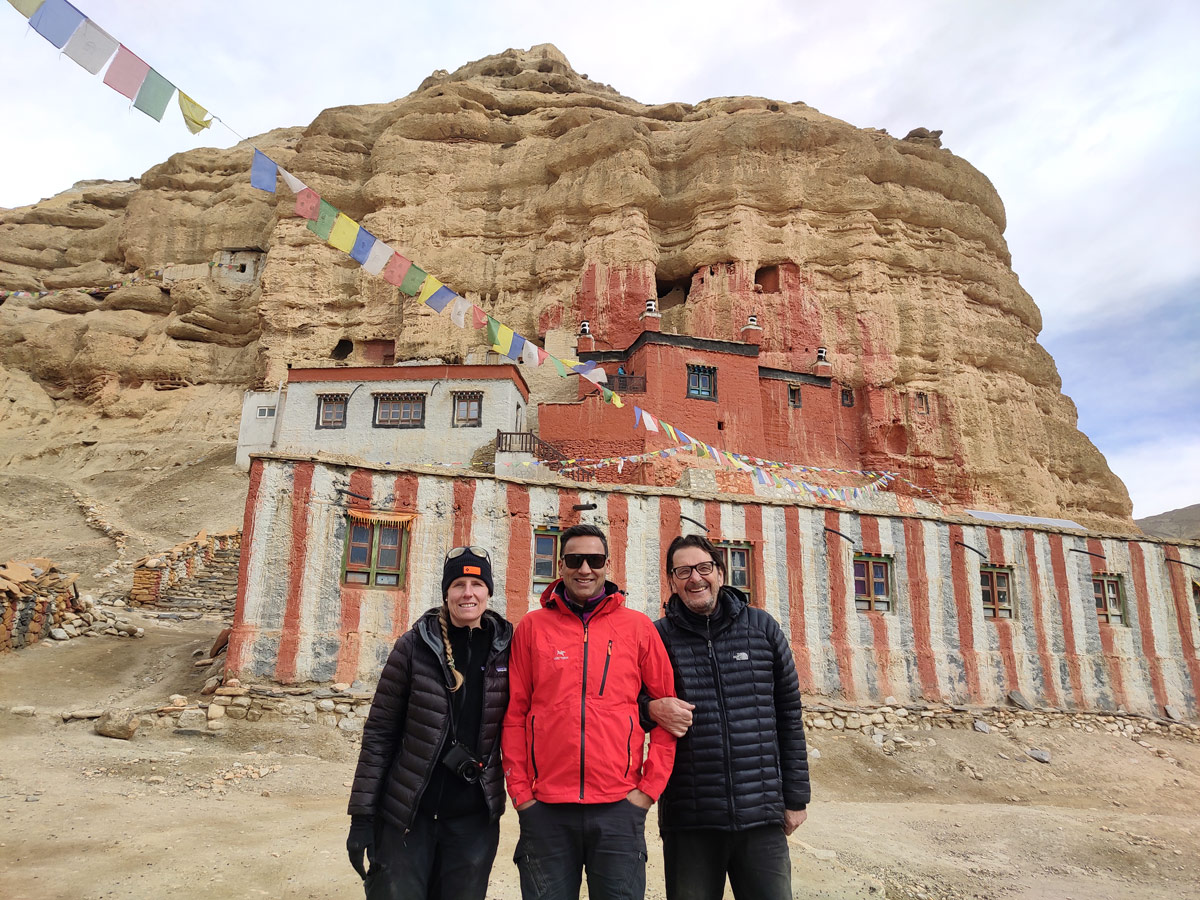
The main highlight of this village is the Shija Jhong Cave or the Chhoser Cave which is one of the most mysterious caves in Upper Mustang. This cave is fove storeyed and is carved into cliffs.
Why this cave is a mystery is because the exact reason for the construction and use of the caves has remained a mystery over the years, sparking interest among archaeologists and researchers yet there is no definitive answer to it.
Some other attractions of the village are Nyiphuk Monastery and Konchokling Monastery which, although small, are the historically important Buddhist sites of the village.
Ghami – The Land of the Longest Mani Wall
Located in the Dhami Village Development Committee in Upper Mustang region of Nepal, Ghami village is known for its historical, traditional, and cultural significance and it is a popular stop for trekkers.
This is also a good stop for trekkers willing to explore Annapurna Conservation Area side by side as it is not much far away from Ghami. This is an excellent stop for trekkers interested in exploring the true local life and heritage of Nepal.
The mani reason why Ghami is famous for its striking red cliffs and the landmark that is the longest Mani wall in Nepal, which is a stone wall adorned with Buddhist mantras and of high spiritual significance in Buddhism.
The Ghami Monastery is another significant religious site located in the village that adds to the cultural richness of the village. This is a sacred place with many ancient murals.
The surrounding red cliffs are the unique rock formations which further enhance the beauty of the village ten folds. The Ghami painting, a large, ancient mural, is also a site to behold.
Tsarang (Charang) – A Village of History and Monasteries
Known as the fortress village in the Upper Mustang region, Tsarang was once the second largest town in Mustang. This village is home to an impressive fortress and an ancient monastery.
The ancient Tsarang monastery holds several ancient Buddhist scriptures and wall paintings which put on a stunning display of the teachings of Tibetan Buddhism.
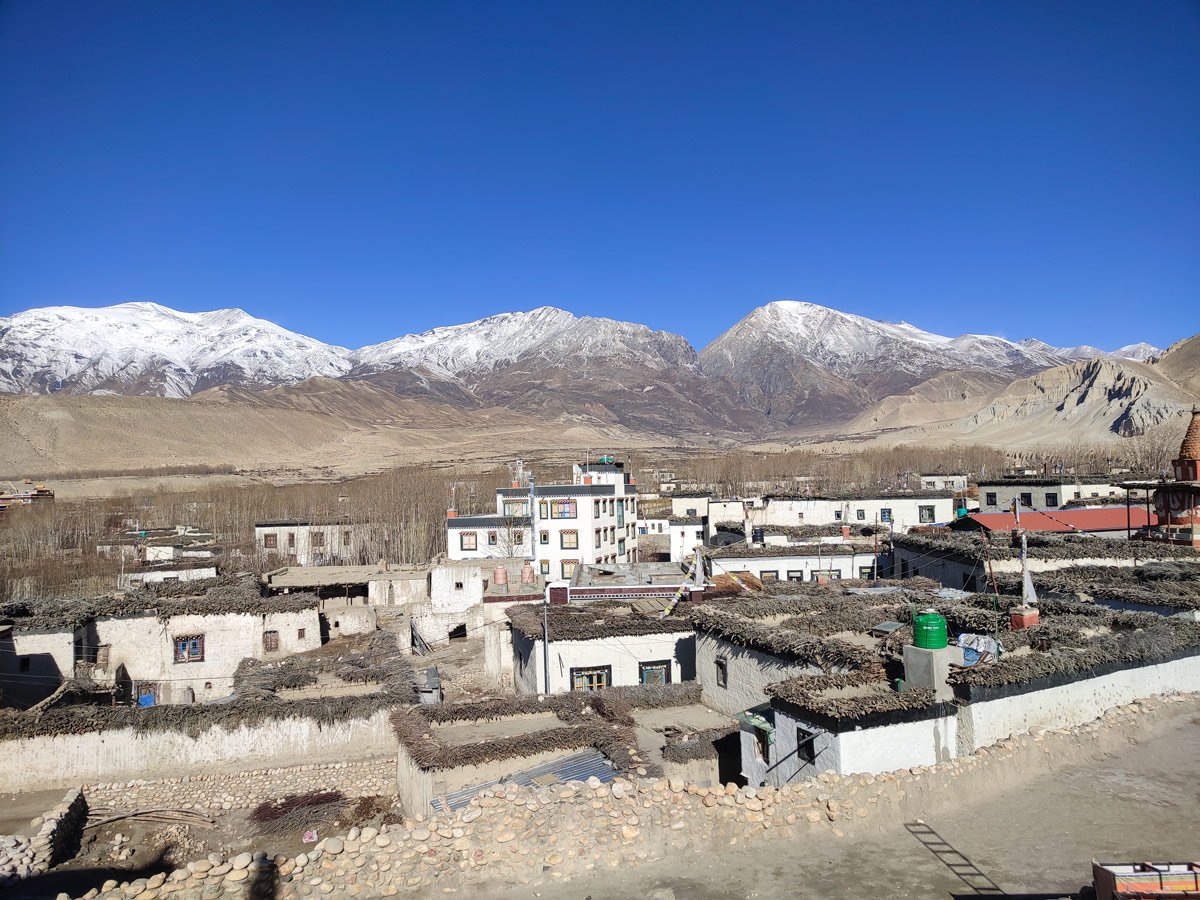
The red palace in Tsarang which once used to be a royal residence, is now a historic site. And its historical importance is evident in its well-preserved architecture and cultural heritage.
Several terraced fields and farms surround the Tsarang village. While this would be normal for other regions of Nepal, this is a rare and pleasant sight in the arid and dry landscapes of Upper Mustang region.
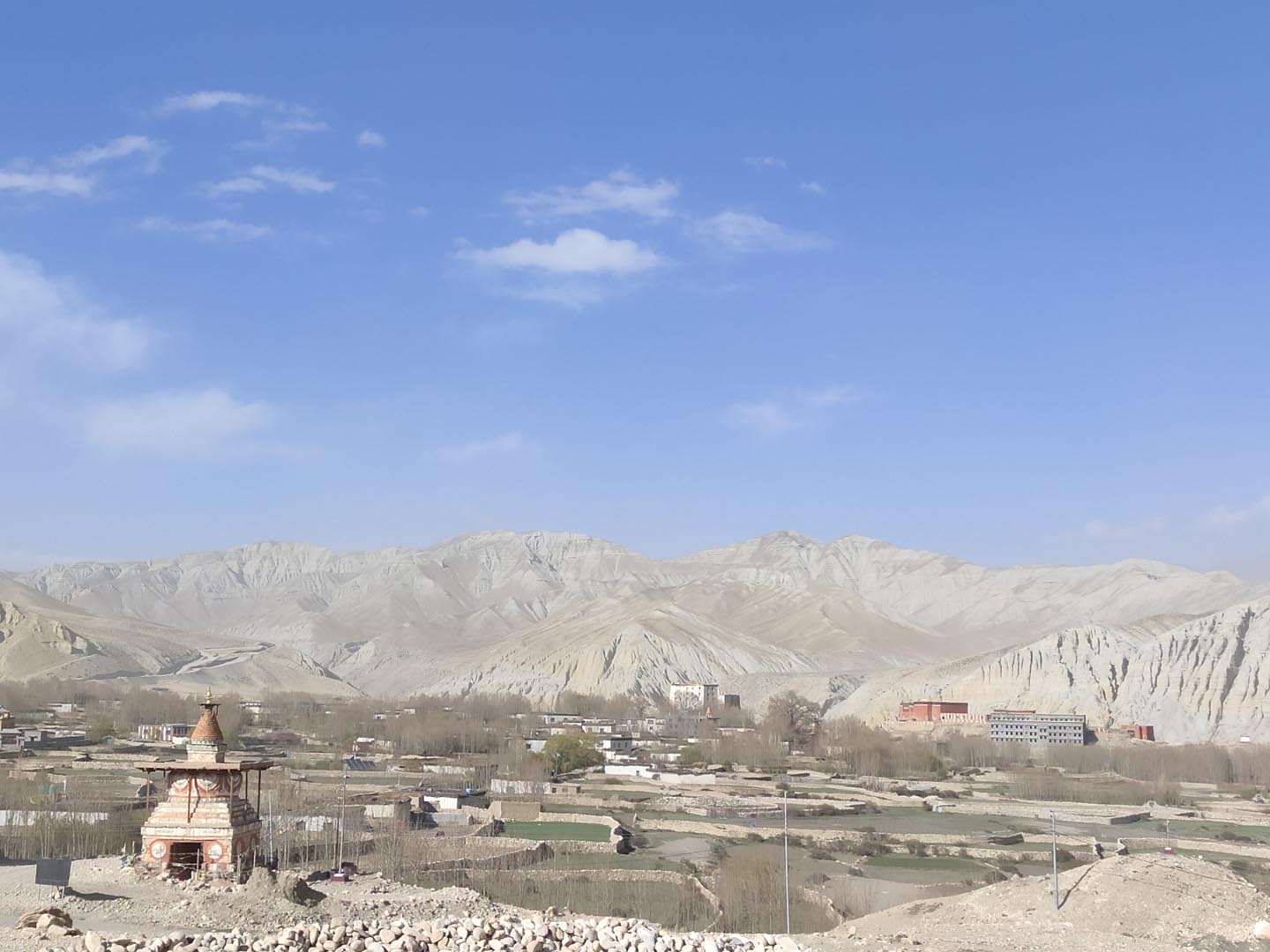
The Tsarang library is a hidden gem of the village that contains ancient texts and manuscripts. The local culture is deeply rooted in tradition, and the traditional houses provide a glimpse into the past.
Dhakmar – The Red Cliff Village
Another village of the Upper Mustang region is the Dhakmar Village which is often regarded as the red cliff village. As the name suggests, the village is famous for the striking red cliffs.
These red cliffs are linked to the legend of Guru Rinpoche. This legend tells that the blood of a demon, slain by Guru Rinpoche, painted the rocks red when he established the Lo Gekar Monastery (Samye Gompa) in the 8th century.
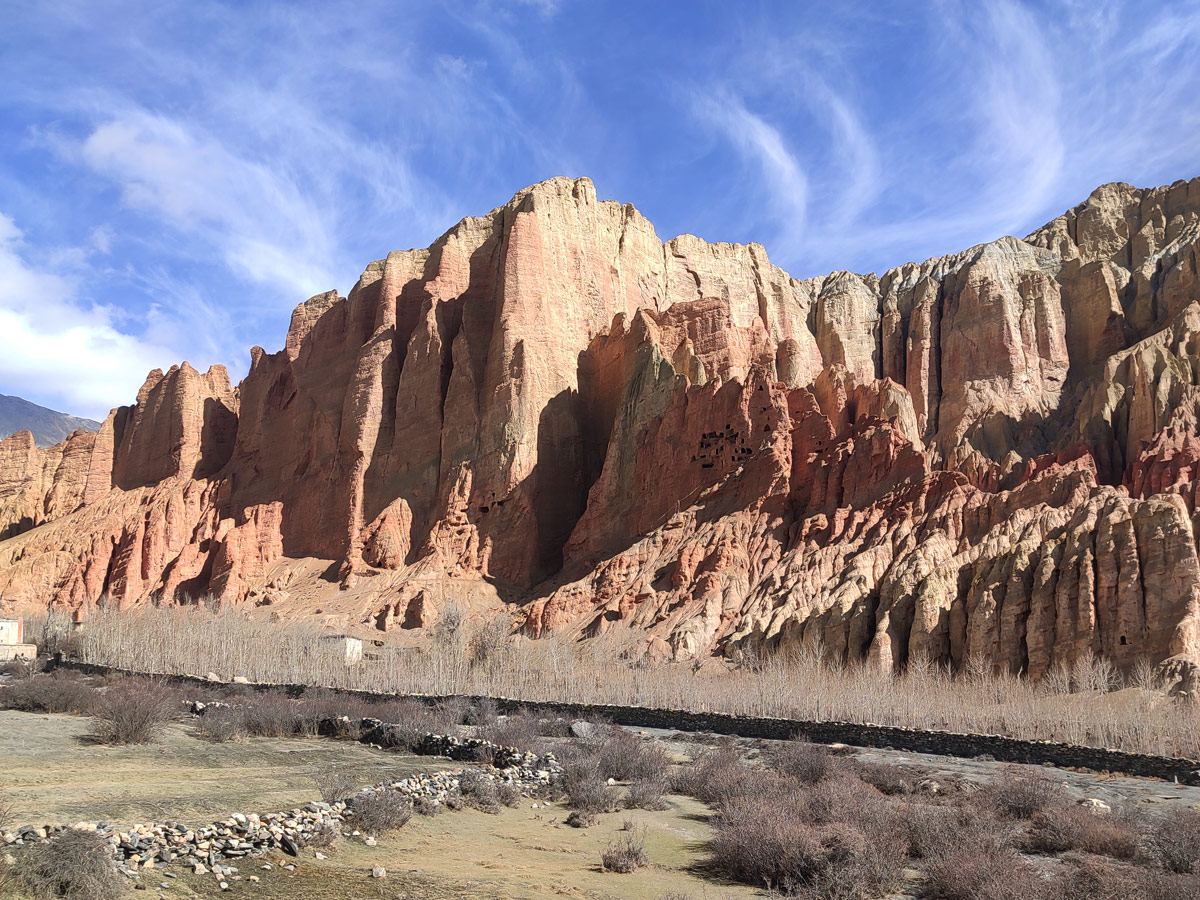
Another highlight of the village is the 1200 year old Dhakmar Gompa which is a significant Buddhist monastery. This monastery clings to a cliff edge rock pinnacle.
The Dhakmar village is a true testament to the remote life of the Nepali locals as the people here are completely untouched by modernization.
Chhusang – The Village of Caves and Cliffs
Sitting at the confluence of Kali Gandaki River and Narshing Khola, Chhusang village is known for its unique rock formations, ancient caves, Tibetan houses, cliffs, and its fertile agricultural lands.
This village also features mysterious man made cave dwellings that might have been used as meditation retreats and burial sites. Besides that, these are also stunning geological formations.
The surrounding landscapes of the village too are a masterpiece of nature that feature towering cliffs and deep gorges. It also features the ancient Chhusang gompa.
The local apple orchards in the village are a must-see, especially when in bloom when you can also try out some apples from the orchards. All in all, the village provides a peaceful and scenic break for trekkers.
Samdzong – The Lost Village Rediscovered
Samdzong village in Upper Mustang is a rather remote village in Upper Mustang which once used to be inhabited by people. However, it was abandoned due to water scarcity, more so a drought.
Regardless, this village gained international attention and has regained the historic value after archaeologists discovered ancient human remains and artifacts in its caves.
These discoveries include the mummies, i.e. around 1500 year old remains of the early inhabitants of Mustang. There also lies an ancient fortress here that tell tales of Mustang’s past.
Trekking Through These Villages
Being in a rain shadow area of Nepal, Upper Mustang is one such trekking area which is open to trekkers all through the year and have no disadvantages in specific trekking seasons like monsoon.
However, the best time to trek in Upper Mustang is also during the peak trekking seasons of Nepal, i.e. spring (April-May) and autumn (September-October), when the weather is pleasant, and the skies are clear.
The most popular trekking route here is the classic Upper Mustang trek, during which you will go through all the key villages of Upper Mustang. The accommodation that you will find here is primarily in teahouses.
You can expect basic but comfortable lodging and meals. The food options include local cuisine influenced by Tibetan flavors and hearty dishes like thukpa (noodle soup), momo (dumplings), and dal bhat (lentil soup with rice).
Keep in mind that Upper Mustang is a restricted trekking area, which means a trekker needs special permits to explore the region. It includes Restricted Area Permit and Trekkers Information Management System (TIMS) card.
When trekking there, it is essential to be mindful and respect the local customs and traditions. Make sure to dress modestly and always ask for permission before taking photographs.
